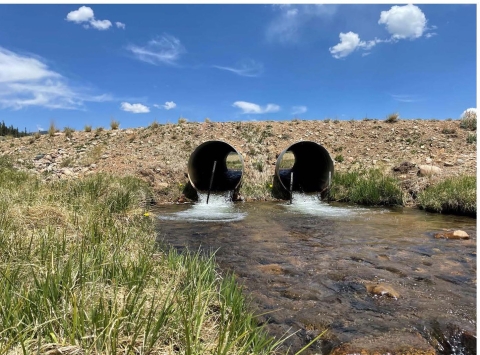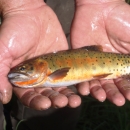States
New MexicoThis project is the final step in the 25-year Rio Costilla Watershed Native Species Restoration Project, the largest native trout restoration project in history. Work to date has included eradication of non-native species and the reintroduction of pure Rio Grande cutthroat trout, Rio Grande sucker, and Rio Grande chub into 120 stream miles, 10 lakes, and one reservoir. This project will address and remove remaining fish passage fish passage
Fish passage is the ability of fish or other aquatic species to move freely throughout their life to find food, reproduce, and complete their natural migration cycles. Millions of barriers to fish passage across the country are fragmenting habitat and leading to species declines. The U.S. Fish and Wildlife Service's National Fish Passage Program is working to reconnect watersheds to benefit both wildlife and people.
Learn more about fish passage barriers within the project area. Additionally, the project aims to expedite fish passage work in the Ponil Creek watershed for the Canadian Lineage Rio Grande cutthroat trout. These barrier removals will increase flood resiliency and support local angler tourism.
Project Quick Facts:
| Location | New Mexico |
| NFPP Project Funding | $1,117,434 |
| Restoration Techniques | Barrier removal |
| Partner Project Lead | Trout Unlimited |
The National Fish Passage Program combines technical expertise with a track record of success.
Implemented primarily through the Service's Fish and Wildlife Conservation Offices, the National Fish Passage Program provides financial and technical assistance to partners across the country. Since 1999, the program has worked with over 2,000 local communities, Tribes, and private landowners to remove or bypass over 3,400 barriers to fish passage and reopen access to over 61,000 miles of upstream habitat for fish and other animals. Staff have expertise in fish migration and biology as well as financial, engineering, and planning assistance to communities, Tribes, and landowners to help them remove barriers and restore rivers for the benefit both fish and people.
Fish passage project proposals can be initiated by any individual, organization, government, or agency. However, proposals must be submitted and completed in cooperation with a Fish and Wildlife Conservation Office. (Please note that fish passage projects being used for federal or state compensatory mitigation or required by existing federal or state regulatory programs are not eligible for funding through the National Fish Passage Program.)
CONTACT A FISH PASSAGE COORDINATOR IN YOUR AREA TO GET STARTED.





